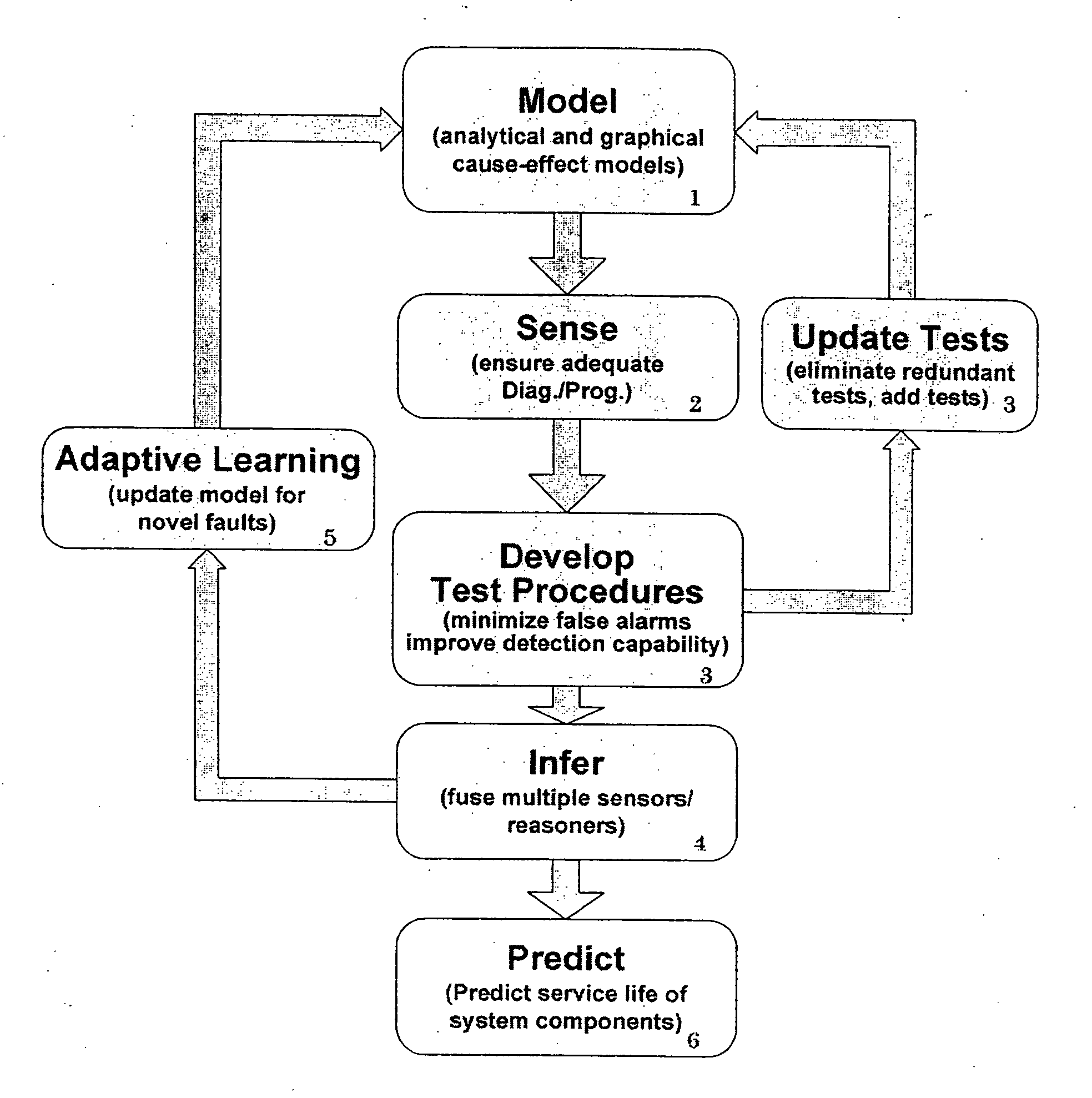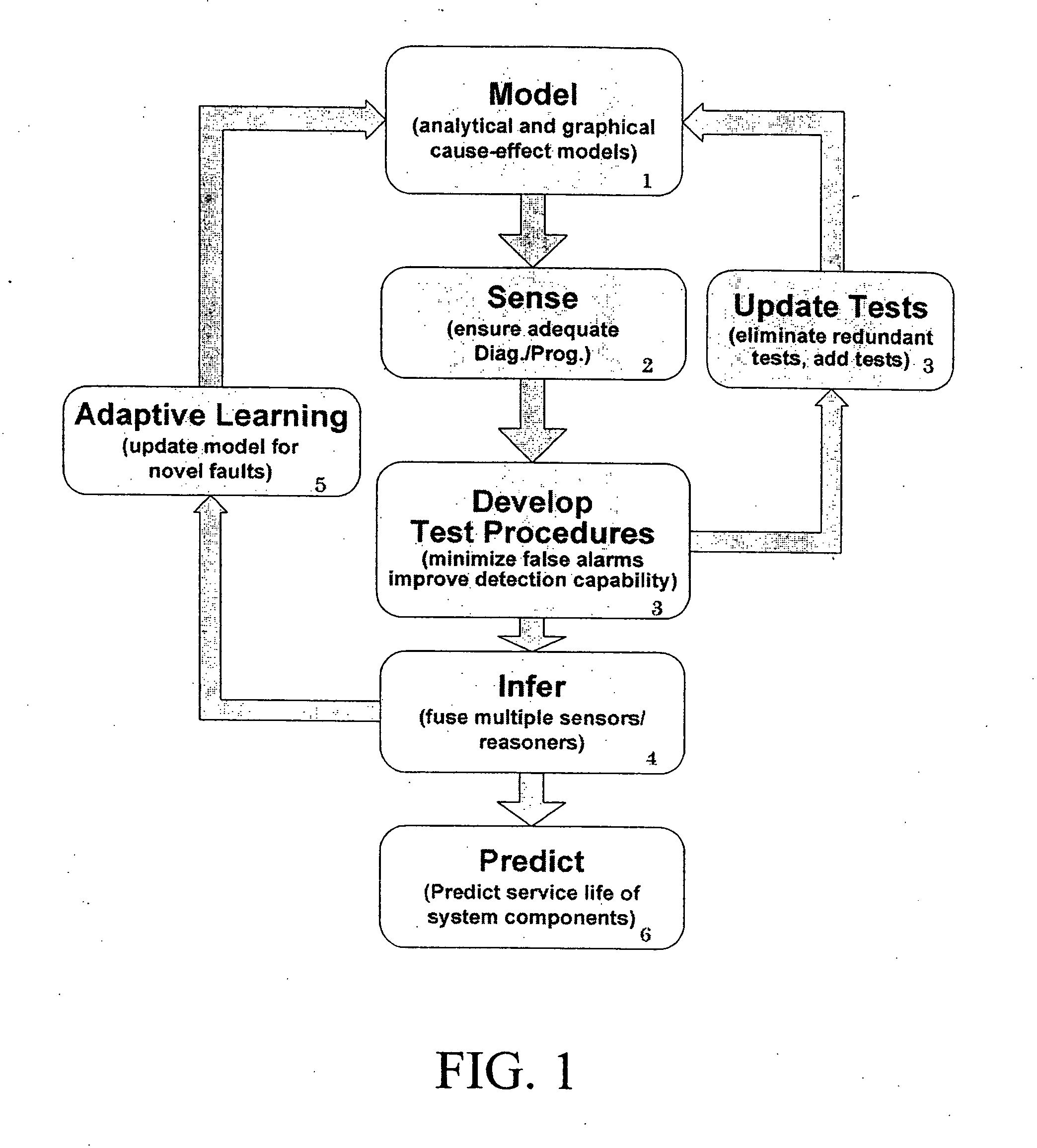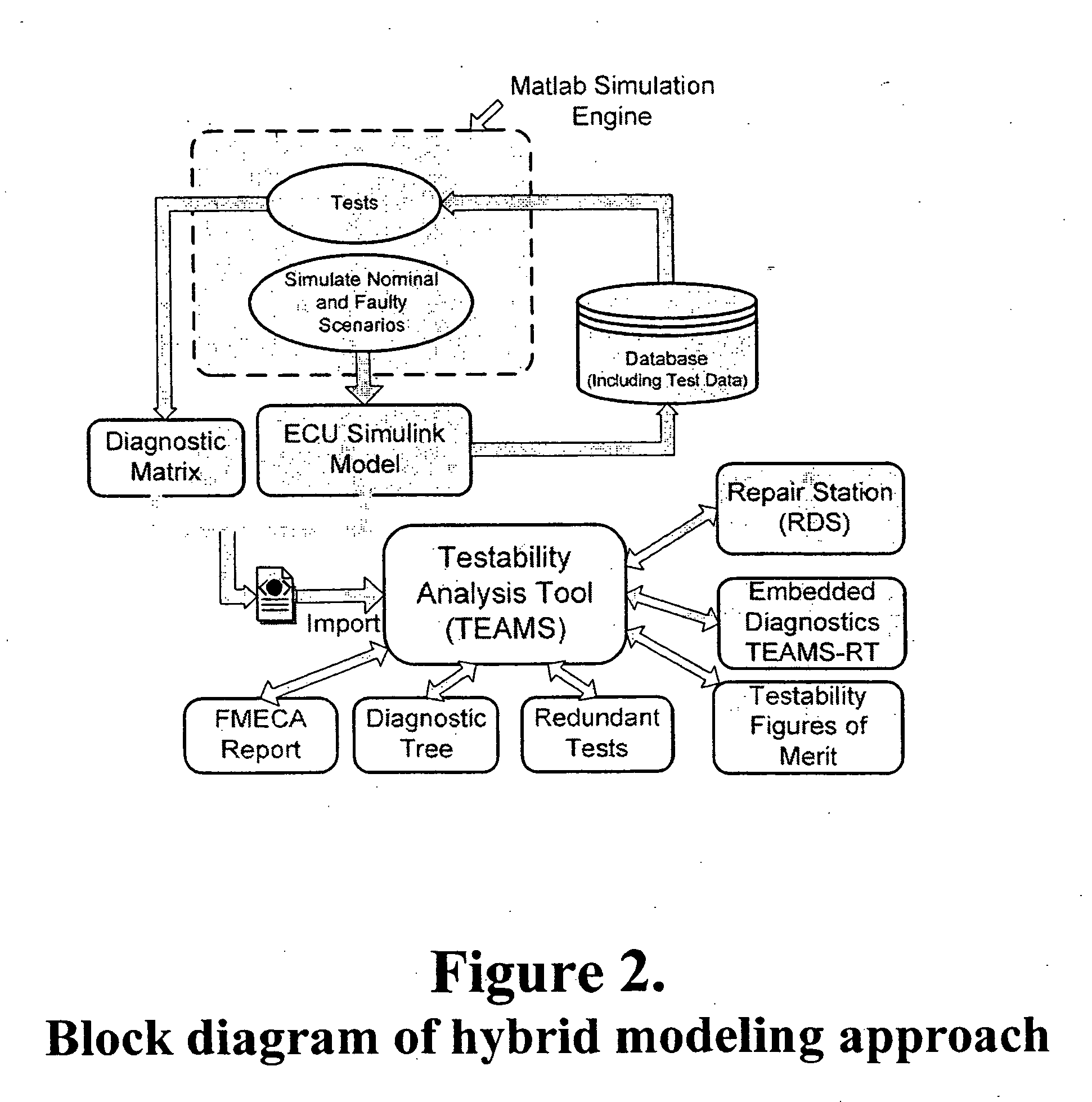Intelligent model-based diagnostics for system monitoring, diagnosis and maintenance
a model-based diagnostic and system monitoring technology, applied in the direction of testing/monitoring control systems, instruments, nuclear elements, etc., can solve the problems of increasing the difficulty of identifying malfunction phenomena, concomitant increased difficulty in identifying malfunction phenomena, and current rule-based diagnostic systems that are difficult to develop, validate and maintain, so as to improve the accuracy and consistency of the diagnostic system, the effect of increasing the complexity of the system
- Summary
- Abstract
- Description
- Claims
- Application Information
AI Technical Summary
Benefits of technology
Problems solved by technology
Method used
Image
Examples
Embodiment Construction
)
[0030] Exemplary embodiments of the disclosed systems and methods are described, at least in part, with reference to the appended figures. Thus, with initial reference to FIG. 1, a block diagram of an exemplary intelligent diagnostic process according to the present disclosure is provided. The process seamlessly employs graph-based dependency models for fault diagnosis and quantitative (analytical) models for test design and fault detection. The process generally contains six major blocks, steps or elements: (i) model, (ii) sense, (iii) develop and update test procedures, (iv) infer, (v) adaptive learning, and (vi) predict. Briefly, these blocks, steps or elements may be described as follows:
[0031] Step 1: Model—Use quantitative and graphical cause-effect models to understand fault-to-error characteristics of system components;
[0032] Step 2: Sense—Evaluate efficacies of sensors to ensure adequate diagnosis;
[0033] Step 3: Develop and Update Test Procedures—Develop smart test proc...
PUM
 Login to View More
Login to View More Abstract
Description
Claims
Application Information
 Login to View More
Login to View More - R&D
- Intellectual Property
- Life Sciences
- Materials
- Tech Scout
- Unparalleled Data Quality
- Higher Quality Content
- 60% Fewer Hallucinations
Browse by: Latest US Patents, China's latest patents, Technical Efficacy Thesaurus, Application Domain, Technology Topic, Popular Technical Reports.
© 2025 PatSnap. All rights reserved.Legal|Privacy policy|Modern Slavery Act Transparency Statement|Sitemap|About US| Contact US: help@patsnap.com



